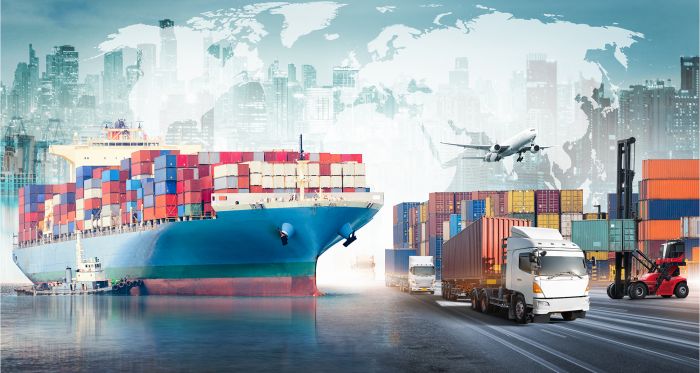Once hailed as cornerstones of economic efficiency and globalization, global supply chains have transformed into geopolitical battlegrounds, where countries exploit control over critical segments for strategic leverage. The latest flashpoint? Trump’s tariff threats against Canada. Since his inauguration only a few weeks ago, the U.S. president has been dangling access to the last stage of many Canadian supply chains – the vast American consumer market – as a bargaining chip to pressure Ottawa into enhancing border security, with the potential for further demands down the road. For Canada, this episode should be a stark wake-up call. It lays bare the vulnerabilities of an interconnected world and underscores the urgent need for a comprehensive, forward-looking supply chain strategy that balances economic integration with national resilience.
This phenomenon, which scholars have aptly termed weaponizing supply chains, reflects a darker undercurrent of globalization. In today’s interconnected world, businesses rely heavily on foreign inputs to produce goods and services. For the most part, this is a force for good. Companies integrate higher-quality, lower-cost components into their products while building ‘flexicurity’ – a combination of flexibility and security – by sourcing from suppliers in different countries. But this system is not without flaws. Choke points – stages in a supply chain where a single country or supplier holds near-monopoly power with few viable substitutes – pose a significant risk. In such cases, the dominant country can turn these choke points into political weapons by threatening to cut off access, sending shockwaves throughout the entire supply chain.
Recent examples illustrate the growing prevalence of this tactic. In 2019, Japan leveraged its dominance in high-tech chemicals to punish South Korea over a political dispute, restricting exports of materials essential for Korea’s semiconductor and display screen manufacturing. Similarly, in 2020, the U.S. leveraged its control over advanced chip design to block foreign firms from selling semiconductors and equipment containing U.S. technology to companies on the Department of Commerce Entities List. The goal was clear: to cement American dominance in semiconductors while curtailing China’s ambitions in advanced chip manufacturing.
Trump’s tariff threats against Canada and several other countries are textbook examples of the choke point playbook in action. When Colombia refused to accept military aircraft carrying Colombian citizens deported from the U.S., Trump retaliated by threatening to restrict access to the U.S. consumer market – a critical endpoint for many Colombian supply chains – through tariffs and sanctions. This tactic mirrored his approach with Canada, where he only relented on imposing sweeping tariffs of 25 per cent on Canadian imports (10 per cent on energy products) after Prime Minister Trudeau promised to invest in border security. What set Trump’s strategy apart, however, is its breadth and focus on the consumer segment: rather than targeting a specific industry, he wielded the U.S. consumer market as a blunt instrument, applying pressure across the board to extract concessions.
Fortunately, Canada isn’t without leverage in the face of U.S. economic pressure. While Trump may claim that Canada has little to offer, reality tells a different story. Canada controls key supply chain strongpoints – supply chain segments where its dominance makes it an indispensable player. Critical minerals, energy resources, medical technology, and automotive components are just a few areas where the U.S. can’t afford to be cut off. These segments aren’t just economic assets; they’re strategic bargaining chips. By doubling down on these strengths, Canada can bolster its economic resilience while reinforcing its standing in the global market.
Beyond that, Canada has another powerful card to play: diversification. By expanding economic ties with other countries, it could threaten to weaken U.S. efforts to build a "Fortress North America" – something our Southern neighbour wants to avoid – while at the same time reducing its vulnerability to American coercion. Countries facing similar economic pressures from Washington – notably in the Asia Pacific – may be especially eager to collaborate, creating new trade opportunities for Canada. Canada should use this Sputnik moment to develop a concrete strategy for diversification.
Finally, Canada can look inward. Investing in the removal of internal trade barriers and improving transportation infrastructure would make it easier for Canadian firms to sell within the country, strengthening domestic markets and reducing reliance on external partners. A more integrated national economy would provide businesses with alternative pathways, making Canada less susceptible to the weaponization of global supply chains by other countries.
What would not be a wise strategy for Canada is to start eliminating its participation in global supply chains. The cornerstone of any Canadian supply chain strategy should be to invest in and support the formation of open, diverse, reliable and socially responsible international supply chains. For most products, the globalized nature of supply chains is a boon for our prosperity. To further streamline them, we must take concrete actions to facilitate trade both within and across Canadian borders, invest in our aging transportation infrastructure, and develop robust traceability standards that can improve our firms’ global supply chain mapping capabilities.





